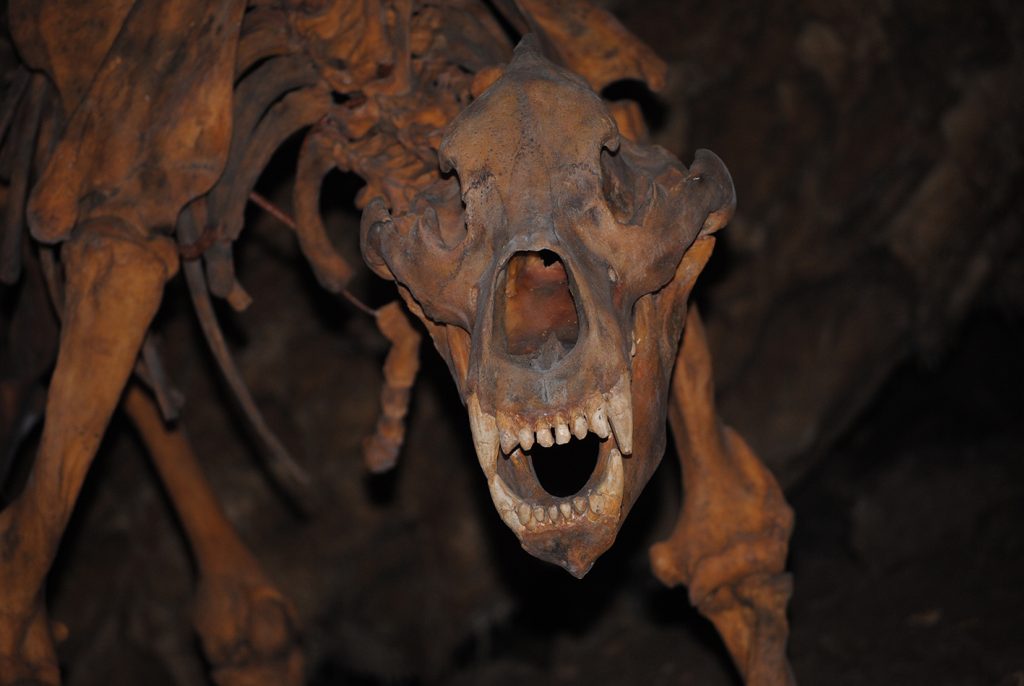New insights into the diet of the extinct cave bears
Bavarian State Collection for Zoology
During the Late Pleistocene period (between 125,000 to 12,000 years ago) two bear species roamed Europe: brown bears (Ursus arctos) and extinct cave bears (Ursus spelaeus s.l.). It is generally assumed that fossil brown bears had a similar diet to extant brown bears, but the situation is not as clear cut for the cave bear. From its discovery up until now, researchers have debated its diet. However, a new paper in the journal Historical Biology sheds light on this issue. Two researchers from Germany and Spain found that the cave bear likely had largely herbivorous diet.
Cave bears show a distinct morphology in the cranium, mandible and teeth, which is related to its dietary specialization. To understand the diet of the cave bear, the researchers digitised the landmarks (biologically meaningful and recognisable points) on the mandible of the cave bears and extant bears. Using sophisticated statistical methods, called geometric morphometrics, the researchers compared the three-dimensional shape of the cave bear mandibles with that of extant bears.
“The analyses showed that cave bears evolved in a similar direction as the herbivorous giant panda”, explains Anneke van Heteren, lead-author of the study and Head of the Mammalogy section at the Bavarian State Collection of Zoology. “This implies that they had adapted to similar food types and were primarily vegetarian.”
“In this study, we used the newest statistical methods, which take into account both the size of the animals and their relatedness, which leads to very reliable results”, says Borja Figueirido, associate professor in the palaeontology group of the Department of Ecology and Geology at the University of Málaga (Spain) and co-author of the study.
The researchers also identified several future research directions. For example the researchers want to study the morphological, and consequently dietary, differences between the various cave bear subspecies. Additionally, they plan on performing three-dimensional computer simulations, called finite element analyses, on the cave bear skull and mandible to assess its bite force.
Publication:
van Heteren AH, Figueirido B. 2018. Diet reconstruction in cave bears from craniodental morphology: past evi-dences, new results and future directions. Historical Biology. DOI: 10.1080/08912963.2018.1547901,
https://doi.org/10.1080/08912963.2018.1547901
Contact:
Dr. Anneke H. van Heteren
Bavarian State Collection for Zoology (SNSB-ZSM)
Münchhausenstr. 21, 81247 Munich
Tel.: +49 (0)89 8107 125
E-Mail: vanHeteren@snsb.de
A mounted cave bear skeleton in the Harz Mountains. The canines, which remind of a meat-eater, are clearly visible, despite having a vegetarian diet. Photo: Anneke H. van Heteren (SNSB-ZSM)


